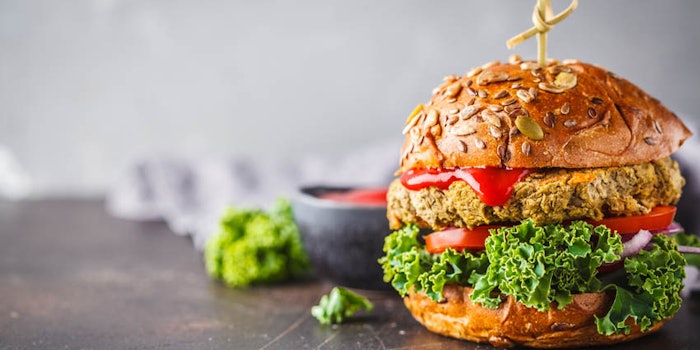
Mane releases study on the correlation between the ingredients used in plant-based
burgers and their impact on the sensory features of the end-product.
After more than 12 months of research, the company has established the correlation between the ingredients used to make plant-based burgers and the resulting sensory features, designed to allow its food product designers to precisely adjust their formulas in order to be as close as possible to a beef-based burger.
Study Details
A robust Design of Experiment In order to make these links, Mane constructed a solid Design of Experimenta which changed a variety of factors. Different experiences were conducted in order to determine how the sensory features (e.g., taste, texture, etc.) of a plant-based burger were impacted by the ingredients used in the formula (e.g., fibres, starches, textured proteins, etc.).
This Design of Experiment sought to demonstrate which factors positively influence the juiciness, elasticity and fatty texture. It also wanted to understand how to minimise the firmness, fragility, stickiness, off-notes (e.g., beany, cereal, fattiness, etc.) and bitterness of the endproduct while applying variations to the ingredients used. The sensory features (e.g., juiciness, firmness, elasticity, etc.) were evaluated by a panel of 12 experts trained in assessing meat substitutes.
Results
Results applicable as of now The Design of Experiment has therefore helped to establish that several factors influence – either positively or negatively – the sensory features of the end-product. In contrast, some factors do not have any influence at all.
For instance, one of the findings of this survey demonstrates that the impact of fibres is determined by the type of fibres used. Correlations were also established between certain factors, such as the fatty sensation reduces the perceived bitterness (F-1).
With this survey, Mane fully intends to maintain its expertise and get a head start in the trendy meat alternative segment. Thanks to these initial results, it is now possible for the company to work alongside its partners and develop tailored formulations based on their precise specifications for the sensory features of the end-product.
New results from ongoing studies are expected such as studies on extrusion and its consequences on flavor stability (both in dry and wet environments; in pre- and/or post-extrusion), the role of fat in mouthfeel and juiciness perceptions, the choice of colouring agents to ensure visually appealing products as well as the development of process flavous, flavoring preparations and culinary bases specially adapted to plant-based applications.
FOOTNOTE
aExperimental method, also known as DoE, which causes simultaneous variations of various parameters in order to identify the most influential factors, the interactions between the factors and the minimum number of measuring points that are necessary to obtain the maximum amount of information. It determines the optimal set points of the different parameters in order to achieve the desired result. (source: e-marketing.fr).










